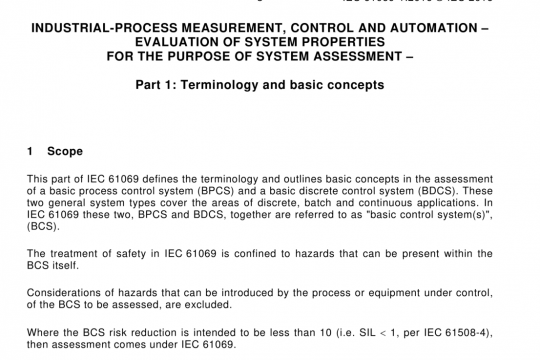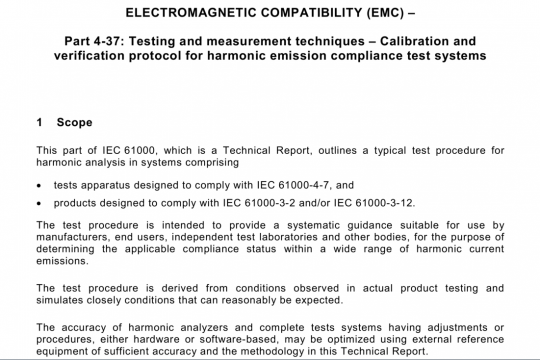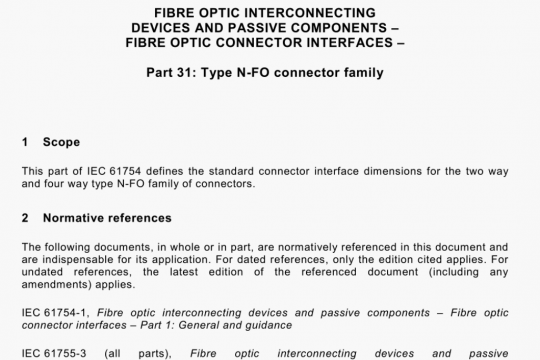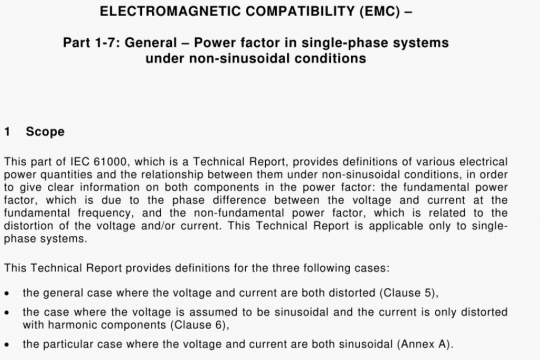IEC 62969-2 pdf free download
IEC 62969-2 pdf free download.Semiconductor devices – Semiconductor interface for automotive vehicles – Part 2: Efficiency evaluation methods of wireless power transmission using resonance for automotive vehicles sensors.
3 Terms and definitions For the purposes of this document, the following terms and definitions apply. ISO and IEC maintain terminological databases for use in standardization at the following addresses: • lEG Electropedia: available at http://www.electropedia.org/ • ISO Online browsing platform: available at http://www.iso.org/obp 3.1 wireless power transfer technology of power transmission/receiving without power line 3.2 resonance frequency f special frequency which is determined by inductance and capacitance of the coil 3.3 resonant wireless power transfer energy transfer maximizing method using the concord of resonance frequency between the two coils which make magnetic inductive coupling 3.4 power driving coil coil which receives RF power directly Note 1 to entry: The power driving coil is part of the basic elements of the resonant wireless power transmission system. 3.5 transmitting resonator coil coil which transfers power using magnetic resonance Note 1 to entry: The transmitting resonator coil is part of the basic elements of the resonant wireless power transmission system.3.6 receiving resonator coil coil which is receiving wireless power Note 1 to entry: The receiving resonator coil is part of the basic elements of the resonant wireless power transmission system. 3.7 load coil coil which supplies power to the devices Note 1 to entry: The load coil is part of the basic elements of the resonant wireless power transmission system. 3.8 resonator coil coil, the inductance and capacitance of which have been determined according to its geometry 4 Testing methods 4.1 General The concept of resonant wireless power transfer system is shown in Figure 1 and efficiency is a function of the loading conditions (e.g. light load, medium load, and full load) as well as the degree of coupling between the transmission and receiver coils (e.g. weak coupling or perfect coupling). The system comprises six main functional units which are an automotive vehicle DC supply unit, a RF power generator unit, a T coil unit, an R coil unit, a rectifier unit and a DC-DC converter unit. The T coil unit includes a power driving coil and a transmitting resonator coil. The R coil unit includes a receiving resonator coil and a load coil. The automotive vehicle DC supply means that the supplied electric power which is provided by vehicle, which voltage can be +12V or +24V. The RF power generator unit is the circuit which can convert DC power to RF power. At this time, the frequency of RF power can be hundreds of kHz to tens of MHz. The T coil unit and the R coil unit are actually delivering power wirelessly. The rectifier unit is the electric circuit which can convert RF power to DC power. The DC-DC converter unit converts the level of DC voltage. The rectified voltage is different from the voltage for driving a load. Therefore, the DC-DC converter is required. Finally a load can be connected to the output of DC-DC converter. The value of characteristic impedance (z0) should be specified when designing a high frequency circuit and measuring the high frequency characteristics. Usually the value of Z0 is 50 0.IEC 62969-2 pdf download.




